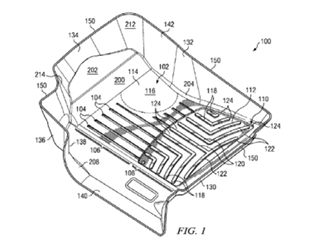The US Court of Appeals for the Federal Circuit affirmed a decision to correct inventorship, finding that the alleged joint inventor’s contribution to a claimed invention was significant and adequately corroborated by evidence. Blue Gentian, LLC v. Tristar Products, Inc., Case Nos. 21-2316; -2317 (Fed. Cir. June 9, 2023) (Prost, Chen, Stark, JJ.)
Blue Gentian owns utility and design patents directed to an expandable hose. Prior to filing the first patent application, Michael Berardi (the sole inventor of the asserted patents and Blue Gentian’s principal) met with non-party Gary Ragner to discuss investing in Ragner’s expandable hose. Berardi had no experience designing hoses at the time of the meeting. Berardi testified that he came up with the idea of his hose after watching a demonstration video of Ragner’s hose but before the meeting. At the meeting, Ragner disclosed a prototype and documents relating to his hose and discussed the inner components of the hose. Berardi built his first prototype a day after the meeting and filed his first patent application three months later. Blue Gentian subsequently filed suit against Tristar for infringement of its expandable hose patents. Tristar counterclaimed to correct inventorship of the patents, alleging that Ragner should have been named a co-inventor.
A court may order a correction of inventorship when it determines that an inventor has been erroneously omitted from a patent. The inventors listed on an issued patent, however, are presumed to be the only true inventors. Thus, a party must prove incorrect inventorship by clear and convincing evidence. An alleged joint inventor’s testimony standing alone is insufficient to establish inventorship by clear and convincing evidence; the testimony must be corroborated by evidence. A joint inventor must contribute significantly to the invention’s conception or reduction to practice, and the contribution must involve some collaboration with the other inventor.
The district court, after an evidentiary hearing, entered judgment on the inventorship counterclaim in Tristar’s favor and ordered correction of the patents under 35 U.S.C. § 256. Blue Gentian appealed.
The Federal Circuit found that Ragner conveyed three key elements of the hose to Berardi at the meeting and that these elements were a significant contribution to the conception of at least one claim of each asserted patent. The Court noted that these were the very elements Blue Gentian used to distinguish the invention from the prior art, establishing the element’s significance. The Court also found that Ragner’s testimony about conveying the three elements to Berardi at the meeting was adequately corroborated by both physical and circumstantial evidence. The evidence showed the similarity between Ragner’s disclosed prototype and Berardi’s first prototype, and documentary evidence showed Ragner’s familiarity with the three elements before the meeting. Finally, the Court found sufficient collaboration between Berardi and Ragner based on the information exchanged at the meeting, including Ragner’s prototype, confidential documents and verbal explanations about alternative hose designs.
The Federal Circuit dismissed Blue Gentian’s argument that claim construction was needed before analyzing Ragner’s contribution because Blue Gentian did not identify a dispute [...]
Continue Reading
read more


 Subscribe
Subscribe




